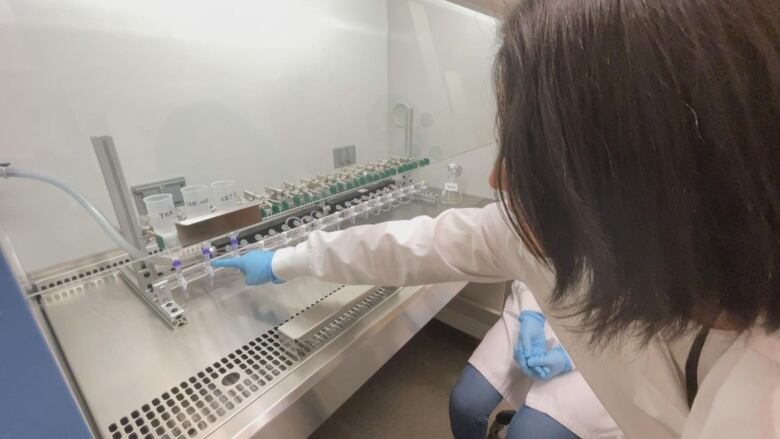Here's how a Calgary lab monitors wastewater for respiratory diseases
Facility started checking for COVID-19, expanded to flu and RSV

Inside the Pine Creek wastewater treatment plant in the south of Calgary,a lab run by the University of Calgary is busy processing wastewater samples from municipalities across the province.
This lab, along with one operated by the University of Alberta, started tracing levels of theSARS-CoV-2 virus in wastewater in early 2020 providing Alberta Health Services with infection trends in different communities.
Now the project has expanded to check for influenza A and B, as well as RSV respiratory viruses that are all currently putting a strain on Alberta's health care system.
Kevin Frankowski, the executive director of Advancing Canadian Water Assets, says adding more pathogens to the list to monitor in the future could provide "significant" data.
"Once we have the samples, then adding additional targets to monitor is reasonably straightforward," he said. "We can extract more and more information from them."
Maria Bautista, senior research associate in the Geomicrobiology Group at the University of Calgary, said the process starts with collecting a good sample.
"The purposeis to capture a sample that represents 24 hours of any municipality." she said. "They capture a little bit of water every, let's say, 15 minutes."
When the samples are then received at the lab, they are concentrated before "breaking open" any viruses presentto release their DNA and RNA.
After mixing the sample with a solution, Bautista saidit is run through a silica column. The DNA and RNA bind to the column, while "everything else that we don't want just flows through."
TheDNA and RNAare then collected andsent to another lab in Calgary to be analyzed.
It makes fortesting that is inclusive and comprehensive, providing an accurate look at infection levels.
Cost-effective monitoring
Frankowski said thatsince COVID-19, the amount of activity in the lab, as well as the number of people working there has increased.
He added that because the lab deals with a variety of fields, from analytical chemistry to microbiology, it is unusual.
"There are a limited number of labs within wastewater treatment plants that can do this sort of work," Frankowski said.
He added thatit's an extremely cost-effective monitoring program and an "excellent investment," one that operateson less than a dollar per year, per person monitored.
"I think that there's huge potential for this approach."
With files from Evelyne Asselin












_(720p).jpg)


 OFFICIAL HD MUSIC VIDEO.jpg)
.jpg)



























































































